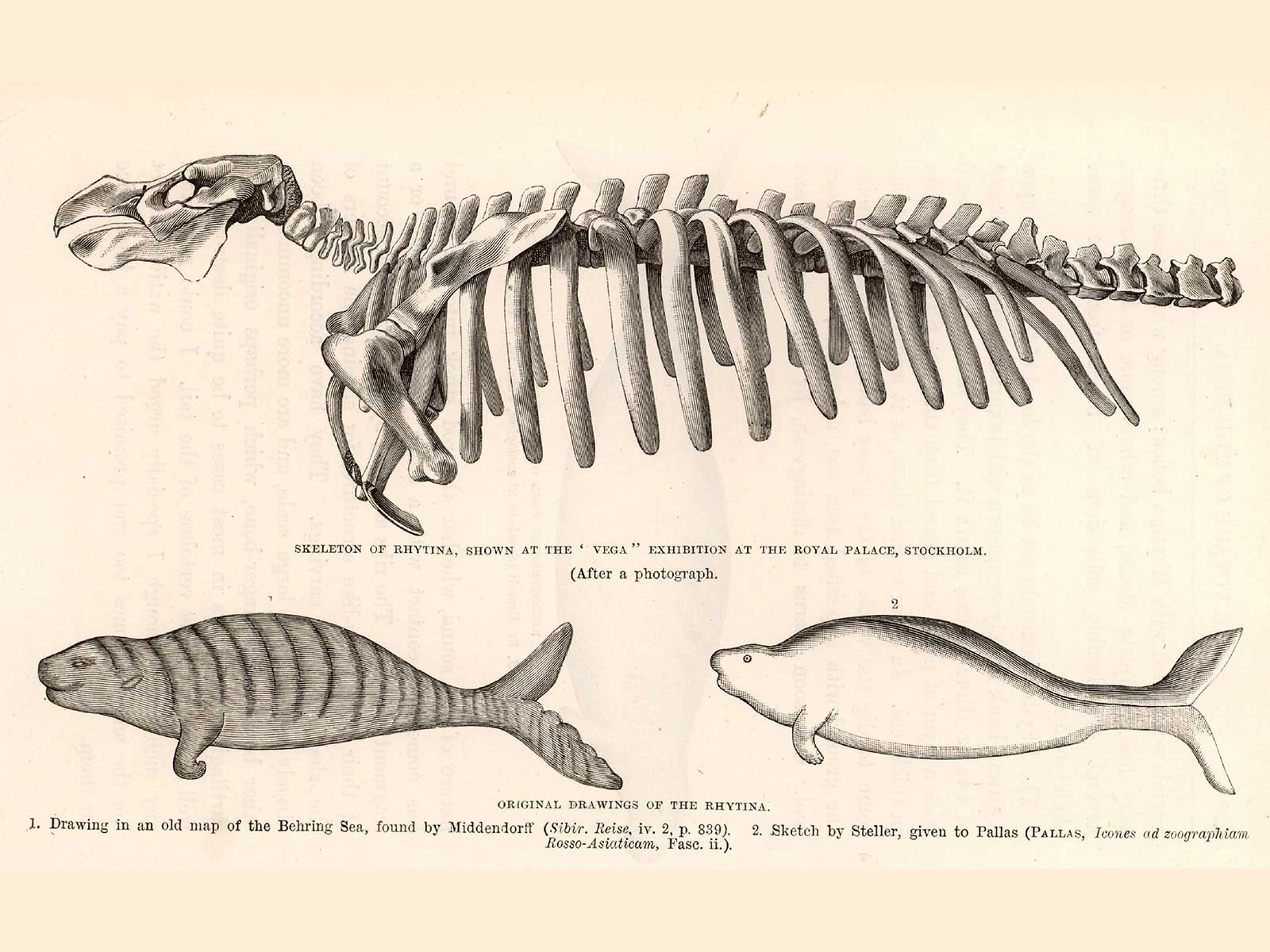Science
Related: About this forumHow Steller's Sea Cows Impacted the Environment They Left Behind
A new paper explores the ways these extinct megaherbivores would have reshaped kelp forests across the North Pacific
Devon Bidal, Hakai
October 15, 2021

Gigantic and extinct, Steller’s sea cows would have played an important role in shaping their environment. Universal History Archive / Getty Images
In the chilly waters off Russia’s Commander Islands, a Steller’s sea cow grazed on kelp fronds. The buoyant behemoth sheltered her calf close to shore and away from predators. Seabirds perched on their exposed backs, eating parasites from their skin. It was here, some 250 years ago, that these giant sirenians met their end. The last remaining Steller’s sea cow was killed and eaten in 1768 by hungry fur traders who were collecting pelts—from the region’s sea otters in particular. What remained were the ecological ghosts of giants, the extinction of which likely had widespread consequences for the marine ecosystem they left behind. According to a new study, these megaherbivores influenced kelp forest dynamics across the northern Pacific Ocean.
From whales to wooly mammoths, megafauna are charismatic, large-bodied creatures. Typically, animals that weigh more than 45 kilograms fall into this category, while megaherbivores weigh more than 1,000 kilograms. In the past, there were far more of these giants and each left their colossal mark on the ecosystems they inhabited. But climate change, hunting, and habitat loss pushed many to extinction—with untold consequences for ecosystem function.
Steller’s sea cows were first formally described in Western science by naturalist Georg Wilhelm Steller in 1741—less than 30 years before they went extinct. Measuring more than seven meters and weighing approximately 5,000 kilograms, Steller’s sea cows resembled living sirenians such as manatees and dugongs, although they were about 10 times heavier. Historical accounts suggest Steller’s sea cows were unable to fully submerge and grazed near the surface. Before they were wiped out, a significant population inhabited coastal areas around the North Pacific, from Mexico to Alaska to Japan.
How Steller's Sea Cows Impacted the Environment They Left Behind
Weighing up to 5,000 kilograms, Steller’s sea cows were substantially larger than modern-day sirenians. Sarah Baker
Determining how an extinct species affected its environment involves a lot of speculation. But by analyzing Steller’s observations of the sea cow’s behavior and biology, and comparing them with archaeological evidence and knowledge of modern coastal environments, Cameron Bullen, a marine ecologist who led the research as part of his master’s thesis at the University of British Columbia, explored how the giant sirenians would have affected ecosystem dynamics. He notes that while it’s impossible to test just how these megaherbivores would have affected kelp forests, “it’s hard to imagine that they wouldn’t have had any impact at all.
More:
https://www.smithsonianmag.com/science-nature/how-stellers-sea-cows-impacted-the-environment-they-left-behind-180978869/
eppur_se_muova
(36,261 posts)I've read that the bones and teeth of these animals are still occasionally found on the islands in their old habitat range. If Arctic temps have helped to preserve the DNA -- as they apparently have with the remains of woolly mammoths and other Ice Age mammals -- it just might be possible.
And even as a vegetarian, I'm curious as to whether these couldn't be farmed.